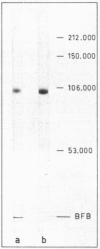Abstract
Factor B was isolated from fresh rat plasma by sequential chromatography on QAE-A50, Biorex-70, gel filtration on Sephadex G-200 superfine and rechromatography on QAE-A50. That Brat was isolated in its native form was indicated by its migration during immunoelectrophoresis and by its capacity to react with cobra venom factor (CoVF) in the presence of human D to form a C3 convertase capable of cleaving purified rat C3 and human C3. The recovery of Brat was between 8 and 15%; the final material was homogeneous according to SDS-PAGE analysis. Reduction of Brat with DTT in the presence of urea and SDS did not produce detectable peptides of lower molecular weight. Both reduced and unreduced Brat had an apparent molecular weight of 100,000. An antiserum against Brat induced in rabbits recognized only one protein in fresh rat plasma as indicated by immunodiffusion and immunoelectrophoretic analysis. Zymosan treatment of rat serum resulted in the cleavage of Brat into two fragments with alpha and gamma mobility. Native Brat has a beta electrophoretic mobility. The plasma concentration of Brat in Wistar rats was 215 +/- 38 microgram/ml (mean +/- SD).
Full text
PDF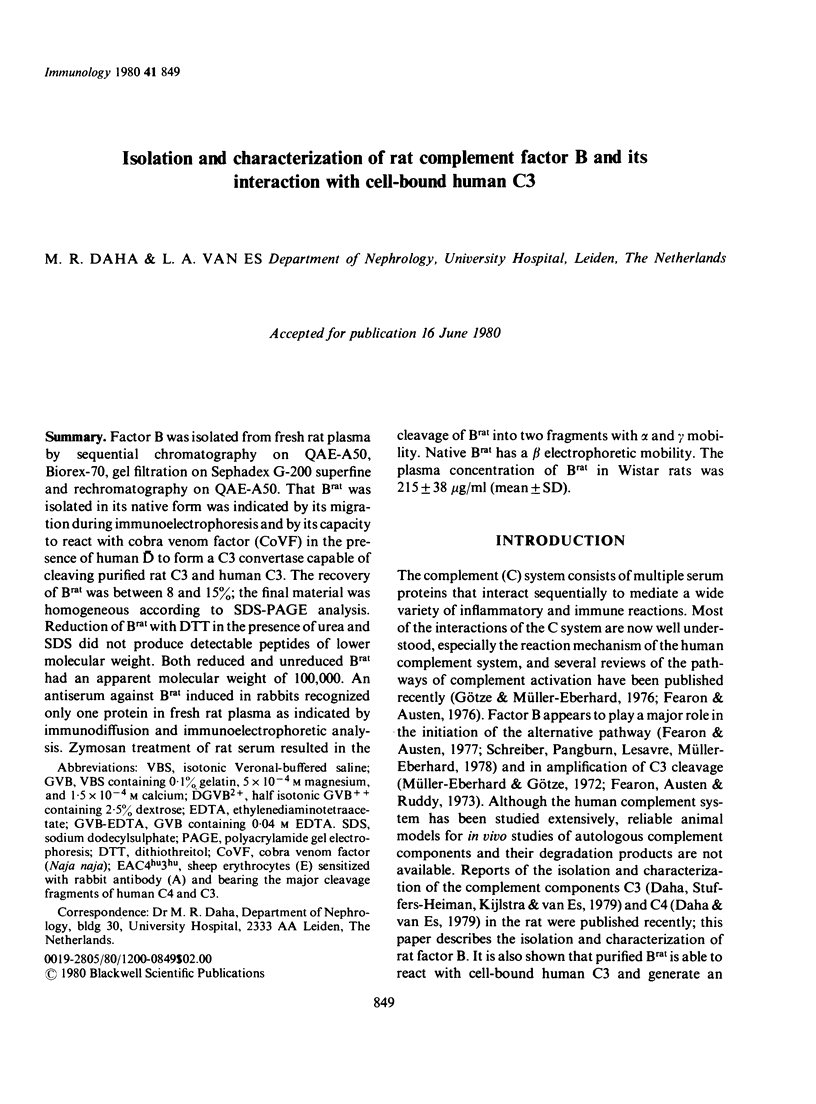
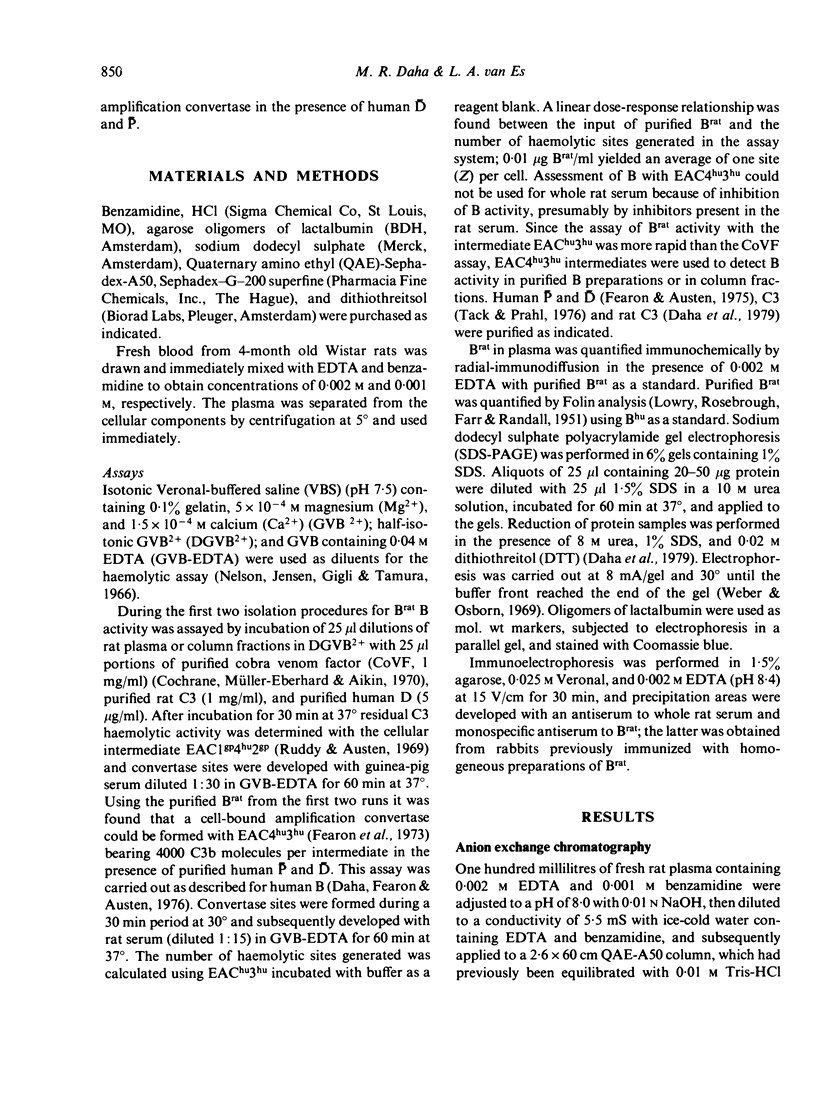
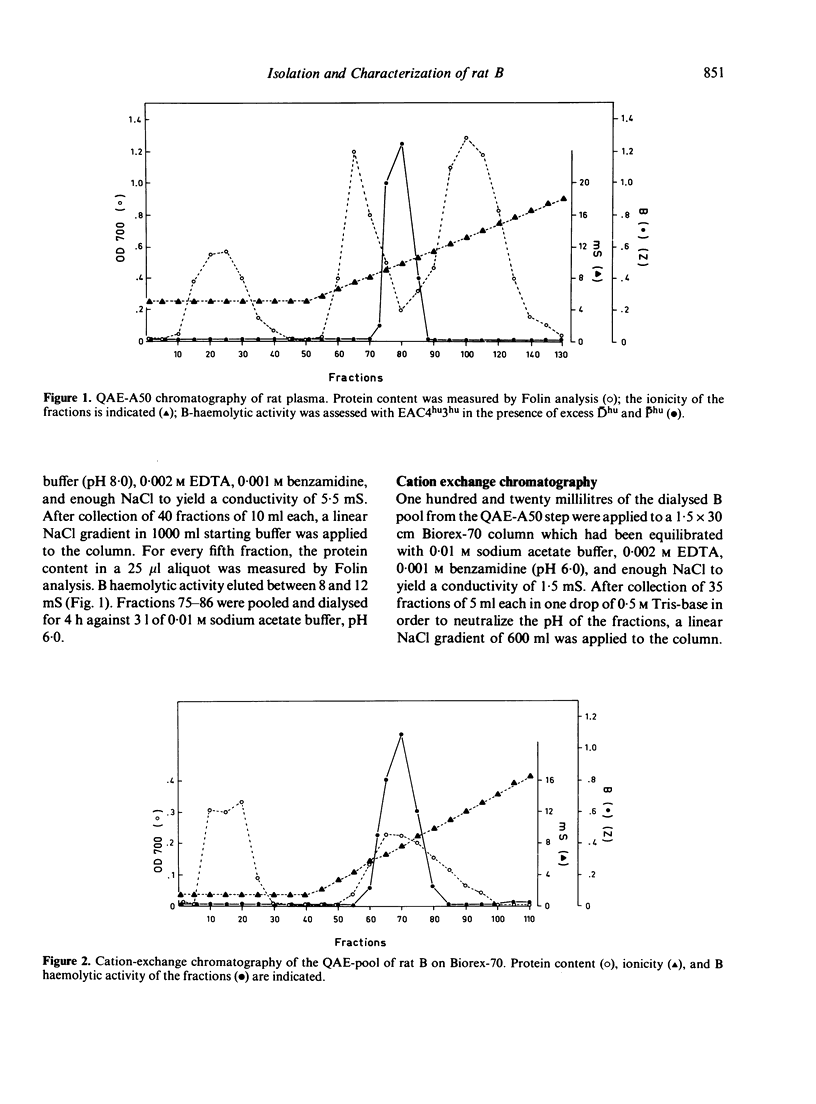



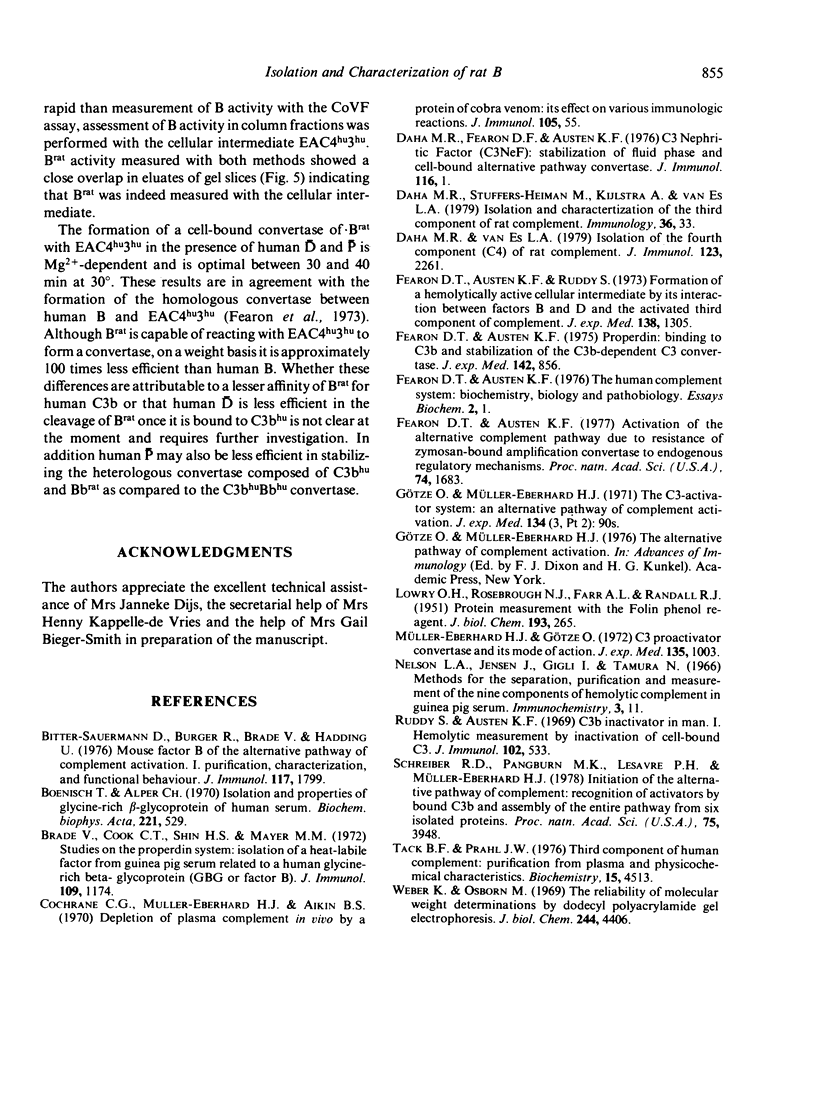
Images in this article
Selected References
These references are in PubMed. This may not be the complete list of references from this article.
- Bitter-Suermann D., Burger R., Brade V., Hadding U. Mouse factor B of the alternative pathway of complement activation. I. Purification, characterization, and functional behavior. J Immunol. 1976 Nov;117(5 PT2):1799–1804. [PubMed] [Google Scholar]
- Boenisch T., Alper C. A. Isolation and properties of a glycine-rich beta-glycoprotein of human serum. Biochim Biophys Acta. 1970 Dec 22;221(3):529–535. doi: 10.1016/0005-2795(70)90224-2. [DOI] [PubMed] [Google Scholar]
- Brade V., Cook C. T., Shin H. S., Mayer M. M. Studies on the properdin system: isolation of a heat-labile factor from guinea pig serum related to a human glycine rich beta-glycoprotein (GBG or factor B). J Immunol. 1972 Dec;109(6):1174–1181. [PubMed] [Google Scholar]
- Cochrane C. G., Müller-Eberhard H. J., Aikin B. S. Depletion of plasma complement in vivo by a protein of cobra venom: its effect on various immunologic reactions. J Immunol. 1970 Jul;105(1):55–69. [PubMed] [Google Scholar]
- Daha M. R., Fearon D. T., Austen K. F. C3 nephritic factor (C3NeF): stabilization of fluid phase and cell-bound alternative pathway convertase. J Immunol. 1976 Jan;116(1):1–7. [PubMed] [Google Scholar]
- Daha M. R., van ES L. A. Isolation of the fourth component (C4) of rat complement. J Immunol. 1979 Nov;123(5):2261–2264. [PubMed] [Google Scholar]
- Fearon D. T., Austen K. F. Activation of the alternative complement pathway due to resistance of zymosan-bound amplification convertase to endogenous regulatory mechanisms. Proc Natl Acad Sci U S A. 1977 Apr;74(4):1683–1687. doi: 10.1073/pnas.74.4.1683. [DOI] [PMC free article] [PubMed] [Google Scholar]
- Fearon D. T., Austen K. F. Properdin: binding to C3b and stabilization of the C3b-dependent C3 convertase. J Exp Med. 1975 Oct 1;142(4):856–863. doi: 10.1084/jem.142.4.856. [DOI] [PMC free article] [PubMed] [Google Scholar]
- Fearon D. T., Austen K. F., Ruddy S. Formation of a hemolytically active cellular intermediate by the interaction between properdin factors B and D and the activated third component of complement. J Exp Med. 1973 Dec 1;138(6):1305–1313. doi: 10.1084/jem.138.6.1305. [DOI] [PMC free article] [PubMed] [Google Scholar]
- LOWRY O. H., ROSEBROUGH N. J., FARR A. L., RANDALL R. J. Protein measurement with the Folin phenol reagent. J Biol Chem. 1951 Nov;193(1):265–275. [PubMed] [Google Scholar]
- Müller-Eberhard H. J., Götze O. C3 proactivator convertase and its mode of action. J Exp Med. 1972 Apr 1;135(4):1003–1008. doi: 10.1084/jem.135.4.1003. [DOI] [PMC free article] [PubMed] [Google Scholar]
- Ruddy S., Austen K. F. C3 inactivator of man. I. Hemolytic measurement by the inactivation of cell-bound C3. J Immunol. 1969 Mar;102(3):533–543. [PubMed] [Google Scholar]
- Schreiber R. D., Pangburn M. K., Lesavre P. H., Müller-Eberhard H. J. Initiation of the alternative pathway of complement: recognition of activators by bound C3b and assembly of the entire pathway from six isolated proteins. Proc Natl Acad Sci U S A. 1978 Aug;75(8):3948–3952. doi: 10.1073/pnas.75.8.3948. [DOI] [PMC free article] [PubMed] [Google Scholar]
- Tack B. D., Prahl J. W. Third component of human complement: purification from plasma and physicochemical characterization. Biochemistry. 1976 Oct 5;15(20):4513–4521. doi: 10.1021/bi00665a028. [DOI] [PubMed] [Google Scholar]
- Weber K., Osborn M. The reliability of molecular weight determinations by dodecyl sulfate-polyacrylamide gel electrophoresis. J Biol Chem. 1969 Aug 25;244(16):4406–4412. [PubMed] [Google Scholar]



